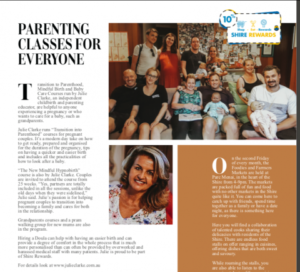Two Birth Stories:
An Allegory to Compare Experiences in Current and Envisioned Maternity
Care Systems
October 2008
- Rima Jolivet, CNM, MSN, MPH
This allegory compares two women’s experiences of maternity care. It uses words and concepts that reflect the seminal values and principles put forward in the “2020 Vision for a High-Quality, High-Value Maternity Care System”* to illustrate one hypothetical example of an optimal experience of maternity care that embodies the concepts of the Vision. It contrasts that account with another story that reflects some of the ways that deficiencies in the present health and maternity care system can play out in the experience of a childbearing woman going through this system. This allegory is designed to “bring home” concretely, through first person narrative, the very different experiences of care delivered in a system that is organized to protect, promote and support physiologic childbearing and to prioritize the provision of effective care with least harm, and care as it is typically delivered in the present U.S. maternity care system. It relates in human terms the importance of system-wide change to the ultimate beneficiaries of maternity care — mothers, babies and families. This systems level perspective is not intended to criticize the dedicated professionals who are working to provide high-quality maternity care or the childbearing women who make thoughtful choices within the present dysfunctional system, but rather to vividly illustrate through metaphor the benefits that could be realized for all by working to achieve the Vision.

It was a warm spring day and my friend, Karen, and I were both ready to get out of the house and go for a walk. Karen and I grew up in the same neighborhood and our families have been friends forever. The two families went to church together and our brothers played on the same sports teams as kids. Karen went to hairdressing school with my sister. I work in a day care center where her brother and his wife send their youngest kids. When we both ended up pregnant for the first time within weeks of each other, we were really excited. But the time flew by and both of us worked up until the end of our pregnancies, so we didn’t get much of a chance to hang out together. I hadn’t seen her since our babies were born, and both of us were eager to get together and share our birth stories.
Neither of us had been out of the house too much in the weeks since birth, so it was a big production. After a lot of organizing and a few false starts because of a last minute diaper change and a major spit-up that required a new outfit, we finally had the babies packed into strollers and were ready to walk to the park not far from the apartment buildings where we live.
As we walked past the slides and tunnels in the playground where the children were running and tumbling and giggling, we looked at each other and laughed. Now we were both mothers! How did we get here? Wasn’t it just a few short years ago that we were little girls in braids and pigtails, running through the neighborhood and scrambling up the slide backwards? We sat on a bench to watch this familiar world from a new vantage point and to talk about our experiences over the last year.
I married my high school boyfriend, and since we were in our twenties, we wanted to start a family soon. Both of us came from big families and wanted to have one, too. I love kids and as the oldest girl in my family, I have been a little mother since the time I was just a kid myself. Working in a day care center was a natural for me. So last year, when I went for my routine physical, I told my provider about our plans, and she ordered a bunch of labs and gave me a prescription for prenatal vitamins to start taking right away, just in case, since they help prevent birth defects. We talked about diet and exercise and how important it is to start out healthy when you’re planning to get pregnant. I checked out fine and since I run around after toddlers all day long, I was in great shape. I brought my vitamins and my clean bill of health home like a trophy to show my husband and we celebrated that night!
Karen met her partner a couple of years ago on a vacation trip and they moved intogether pretty quickly. She was pretty sure it was moving in the direction of marriage,
but they were still enjoying the lifestyle they had when she found out she was pregnant.
Since they’re crazy about each other, after the initial shock wore off they were both really
happy. Still, Karen told me she was worried in the beginning, because they had been
partying quite a lot before she knew she was pregnant and she was scared it might have
harmed the baby. Then she said she was so sick to her stomach during the whole first
trimester that all she could keep down was flat soda and crackers for weeks. The
vitamins made her nauseous so she had stopped taking them. She lost weight in the
beginning, and then made up for it in spades later, because she said all she craved was
fast food and sweets. Not small to begin with, she gained 65 pounds during her
pregnancy and felt pretty crummy a lot of the time.
I felt bad for her, because I had been really lucky in comparison. Having wanted a baby
for as long as I could remember, I was really curious about how it would feel to be
pregnant. Once the first trimester passed with its seasickness and mood swings, I got
into a rhythm and began to really enjoy it. I’d take the dog for a long walk every morning
through the neighborhood before work. Then, when the moms dropped their kids off at
the day care center, I would imagine what my own baby might look like in a few years.
I’d pat my belly and talk to my little “tadpole”. The little kids thought this was funny, and
they’d come and pat the baby, too, and talk to “it” through my belly. I felt like we were
getting to know each other, baby and me, and working together on growing him strong,
with nature humming softly along as it worked its magic inside me. I enjoyed eating
right, choosing fresh, healthy foods. I felt fit and strong, and beautiful. People said I
had a pregnant glow—strangers came up to me on the street and asked if they could
feel the baby kick. Although there were some days when I felt tired and dumpy, mostly I
just felt really sexy and womanly, like the picture of health. My husband was really

attentive to the ways my body was changing and told me I looked wonderful.
Since Karen’s sisters and her brother’s wife had all gone to the same practice at the
hospital nearby, she said it was a no-brainer to sign up for care there, too. I asked her
if she’d liked her providers, and she told me yes, it was fine, but she pretty much saw
someone different every time, and then only for a few minutes anyway. She said it was
a big, busy practice, and most of the time was spent sitting in the waiting room, reading
parenting magazines and watching baby stories on TV while people’s kids climbed all
over the place. The providers always ran late so she could count on waiting for over an
hour, which made them mad at work but there didn’t seem to be any way around it.
Then finally, when the medical assistant came to get her, the whole visit lasted all of 10
minutes…pee in a cup, listen quick to the baby’s heart, “Any questions?”, and out the
door…But she said she liked the fact that she got to have three ultrasounds during the
pregnancy and then they gave her lots of pictures she could take home to show

everyone the baby.
It was different for me. I was the first among my siblings to get pregnant, so I had to
figure things out for myself. Before getting pregnant, I hadn’t realized how many
different kinds of practices and choices for birth were out there. I made it my project,
collecting information on all the choices in our area, interviewing providers, reading up
online about the various types of prenatal and birth care, and comparing the rates of
cesarean section, induction and episiotomy among providers in a brochure I got from the
hospital. It was a real eye-opener to my husband and me to realize how many different
care options there were, and being young and in good health with a good health
insurance plan I had a lot of choices. We had some real heart-to-heart talks about what
was important to us, and he accompanied me to visit several practices and meet
different providers until we found one that felt like a good fit.
My first prenatal visit was really nice. It felt like we were being invited into a special club
by a warm welcoming committee. Everybody we met took the time to congratulate us
and sit for a few minutes to chat and get to know us. The warm, reassuring confidence
of all the staff and providers during our visit made it feel almost like a baby shower. We
met a lot of helpful people and came home with a whole bunch of
resources…suggestions for books and web sites for pregnancy and parenting, numbers
to call if we had any questions, and information about diet and exercise and common
discomforts of pregnancy. One of the nurses showed us how to log on to my personal
electronic health record from any computer, where we could look up our test results, add

to my medical history, or email our provider with a question. It was so cool to have
access to all of my own information, not to mention the links to trusted websites for
information on pregnancy, childbirth and newborn care. Our caregiver listened to my
worries about getting exposed to infections through the kids at daycare while pregnant,
and my husband’s concern about my occasional sudden storms of emotion. She
listened with understanding and compassion, answered our questions and gave us
reassurance and suggestions. Then we got to hear the baby’s heart, and when after a
few swooshing sounds that beautiful beat filled the room, my husband and I looked at
each other and we were both crying. Our caregiver burst into a smile and gave us both
a big hug.
She invited us to get the rest of our prenatal care in a group of women whose babies
would be born in the same month as ours, where we could talk about our experiences,
get information and support, and build a social network. She explained that women who
chose the group care model learned to take their own blood pressure and weight, got to
meet with the provider in a quiet corner for a brief individual check-in to listen to the
baby’s heart and follow its growth. The rest of the time was spent talking together and
doing group activities to learn about a whole range of educational topics, everything from
nutrition and pain management for labor, to breastfeeding and newborn care. She said
the groups were really fun and lively, and she welcomed us to give it a try to see how we
liked it. We left our appointment feeling well cared for and much more calm and
confident, with the sense that we were going to be part of a supportive community.
I told Karen all about the prenatal group visits led by our caregiver and one of the nurses
from our practice, and she was really impressed. She said she wished she could have
used all the time she spent waiting for every prenatal appointment learning things and
making friends with other pregnant women instead of sitting in the stuffy waiting room
while everybody’s temper got shorter and shorter. I told her how being with other women
and hearing that they were going through a lot of the same things as me had helped me
see that my pregnancy, even though it was new and strange to me, was essentially
normal. Having women in the group who were experienced mothers really reassured
me and took away a lot of my first pregnancy anxiety. I also told Karen that recording
my own weight and blood pressure and reviewing my own chart, I had really felt like I
was in the driver’s seat during my pregnancy, and I got more involved in my own health
care than I had ever been before. To me, the numbers and results started to really
mean something in a way they don’t when you’re not the one collecting them. Having
plenty of time to really go into all the issues and concerns and to talk about the benefits
and risks of different treatments with our provider and all the other couples in the group
made us think much more carefully about the care we wanted and to make personal
choices based on an understanding that was much deeper than what we could have
gotten in a typical office visit.
Karen said that would have really helped her when one of her tests showed there was
sugar in her urine, and they sent her across town to the lab for a glucose challenge test.
She said she had been really scared and had to sit there for hours at the lab while she
waited for her blood test, and there was no one there to explain to her what was going
on and whether or not it was a serious problem. Luckily, in the end it turned out she
didn’t have gestational diabetes, but she didn’t find that out for two weeks until the next

visit to her OB practice. She and her partner had been really stressed out.
I told her I knew what she meant. For some issues in pregnancy, like prenatal
diagnosis, there are no easy answers so I had been really glad to have plenty of time to
talk them through with our caregiver and the other families in our group. I told Karen
about the whole discussion we had, where everyone asked a ton of questions, weighed
the choices over, and talked about the pros and cons. After that session, my husband
and I decided to go with the early blood test and an ultrasound to check the baby’s
“nuchal translucency”. We also decided we didn’t want to know the baby’s sex, and both
wanted to be surprised. But another couple in the group decided to have an
amniocentesis, and I went with her and held her hand because her partner was
squeamish and afraid he would pass out at the sight of the needle.
I told Karen that these intimate discussions with a group of peers who were our friends,
going through the same thing but experiencing it through their own personal values,
really helped us figure out how we felt. We came through the pregnancy clear and
comfortable with our choices, having heard the decisions others had made, and having

thought about how each choice might play out in the real lives of people we knew and
cared about. We learned that some of the women were going to have a trained doula
with them during birth. They said that doulas get to know you before the birth, and then
stay with you through the whole thing until afterwards. They help you understand what’s
going on, show your partner how to help, give you massages, and suggest ways to be
more comfortable. We decided we wanted a doula, and found one whom we really liked.
She was very warm and knew so much. She was really interested in what we want and
need. It was great to know we could count on her for the non-medical things. Looking
back over the pregnancy, I commented to Karen that it was when my husband and I both
first really felt like members of a community of our own, tied in with people we knew
cared about us and with whom we shared experiences, support and fellowship.

I asked Karen about how she went into labor. She rolled her eyes and exclaimed, “Well,
let me tell you…. I could have used one of those doulas!” Apparently, two weeks before
she was due, Karen had another ultrasound and her provider told her it looked like her
baby was large and was worried that if she went too much longer it might grow too big to
come out. Karen said she was exhausted and felt heavy and achy, couldn’t get
comfortable, couldn’t sleep, and was ready to get it over with. So her caregiver
suggested they schedule her for an induction. She said that seemed like a great idea to
her at the time! She was nervous the night before her scheduled induction, and hardly
slept a wink. As luck would have it, in the wee early morning hours she rolled over in
bed and her bag of waters broke with a gush, soaking the sheets. She described how
she and her partner jumped out of bed, ran around the house gathering clothes and
baby gear into a bag and rushed straight to the hospital.
When they got there, they saw the provider on call from her practice. She had been
hoping she’d get her favorite provider, but it was one they’d met once early in the
pregnancy and not seen since. She examined Karen and told her she was one
centimeter dilated. The nurse put her on the monitor and said she was having very
irregular contractions, so they told her they would start an IV and give her some Pitocin
to get her into a good labor pattern. Karen said that she hadn’t really been able to feel
the contractions when they were monitoring her, even though she could see them on the
printout. After they started the Pitocin, though, she thought she would go through the
roof! It was change of shift at the hospital by that time, and the nurses and providers
were off getting report, so Karen and her partner were left alone in their room to fend for
themselves. They tried to do some of the breathing exercises that they’d been taught in

the weekend childbirth class they took at the hospital, but the contractions didn’t build
gradually like she’d been taught they would. Instead, they shot up and stayed really
intense until the end, and Karen couldn’t focus on the breathing. Seeing Karen in such
pain made her partner upset and he was afraid something was wrong, which didn’t help
either. They were both on edge. Karen said she couldn’t get comfortable in the bed.
The straps around her belly and the IV tubing made it hard to change positions. When
she squirmed around in pain, the monitor lost the baby’s heartbeat, and then a nurse
she didn’t know came in and tried to reposition it and told her she’d have to try to stay
still so they could be sure the baby was OK.
Every half hour or so, her nurse came in, looked over the strip and increased the Pitocin.
She’d stay for a little while, encourage Karen and change the pads under her, but then
she had to go take care of other patients. She said it was a really busy day on the unit
and commented that it must be a full moon. By the afternoon, Karen was at the end of
her rope. She hadn’t had anything to eat since dinner the night before, and was told she
couldn’t have anything but ice chips. The contractions were coming every 3 minutes and
lasting more than a minute. She was exhausted and running on empty, having hardly
slept the night before. She was overwhelmed with the pain and the tension of trying to
cope. She asked when she could get her epidural and the nurse told her they would see
if she was in active labor yet. Her provider came in and checked her cervix and told her
that it had thinned out quite a bit and moved forward, and was now dilated 2 centimeters.
She had made progress, but was still in early labor. Karen said she lost it, and burst into

tears, sobbing, “I’ll never be able to do this! After all this, I am only two centimeters
dilated?!” She broke down and begged them to let her get an epidural, and her provider
called for anesthesia to come.
Karen told me that the anesthesiologist came in, and introduced himself. She wanted
her husband to hold her hand but he had to leave the room because they said it was a
sterile procedure. She was scared and didn’t want him to leave her alone, but he was
shuffled out before she could protest and she felt too helpless to do anything. She just
wanted relief. They raised the bed up high and the nurse stood in front of her and told
her to lean forward and arch her back like a cat stretching. She felt cold liquid as they
cleaned off her back and then a shot as they gave her some local numbing medicine.
Then they told that she had to hold very still as they put the needle into her back. She
wailed that a contraction was coming and she couldn’t keep still. The nurse grabbed
onto her arms and yelled that it was very important not to move. She was trapped in
excruciating pain and her whole body trembled and shook. The anesthesiologist
seemed to be having trouble placing the catheter and it seemed to take a long time. She
could feel pressure and manipulation in her back, and at one point they told her she
might feel a quick zing down her leg and she did. It was weird, and scary. Finally, they
told her it was done and that she had been a real trooper. They taped up her back and
helped her to lie back down in bed. After a little while, they asked her if she could feel
the contraction she was having, and she said she could feel her belly tightening, but that
was all. She told me she had never been so grateful for anything in her whole life and at
that point she just wanted it to be over. She drifted off to sleep.
I couldn’t believe how different things for me had been when I went into labor. Like

Karen, as my due date came close, I found it harder to sleep at night, more difficult to
move around during the day, and I was tired. I realized what they meant by “heavy with
child”. It occurred to me that this was nature’s clever way to help pregnant mothers
adjust gradually to lack of sleep once the new baby came and to approach labor
gratefully, instead of with dread. I was nervous, but ready to face labor. What a
revelation! I would not have believed in the beginning of my pregnancy that the day
would come when I would be saying, “Bring it on!” but I guess you never know how
you’re going to feel in a given situation until you get there. I tried to take this lesson with
me as I approached childbirth. I wanted to do it without an epidural if possible, but if the
pain crossed the line into suffering, I knew that there was a whole line of pain
management options available to me, and I had an open mind. Our plan was to take it
one step at a time.
Like Karen, my belly was measuring slightly large for my dates by that time, but we’d
had a big discussion in my pregnancy group that week about reasons for labor induction,
and I had learned that estimates of fetal weight were often not very accurate. I was
short-waisted anyhow and felt down deep that the time was drawing near. I had stopped
work by then and was clear that I would rather wait for labor to begin in its own time, and
my provider agreed that this would be best. After a weekend of frantic household chores
that I look back on now as nesting behavior, I woke one morning with low, dull, crampy
back pain, and in my sleepy fog, my first thought was that I must be getting my period.
When I was fully awake, I hauled out of bed and began my daily routine, wondering
whether this might be the day our baby would come. Not wanting to start a false alarm, I
didn’t say anything to my husband at first, and kept the tingle of excitement and jittery
curiosity to myself. As the morning stretched on, the general crampiness I had turned
into short, dull low back pains that got my attention momentarily. But they were brief and
went away almost as soon as I focused on them. The baby was especially active, rolling
around in my belly as if to the beat of a low drum.
By late afternoon, there could be no mistake and I knew for sure that I was having
irregular contractions, which I figured were early labor. They built slowly over the day,
letting me know that they were here to stay and gradually building in rhythm. When I
went to the bathroom, I lost my mucus plug. Returning from work, my husband
immediately noticed the flush of my cheeks and giving me a big hug, whispered, “Is it
starting?” We kissed and smiled at each other, locking eyes for a moment. Then
together, we started to fix a light meal, chatting softly with each other and enjoying the
tenderness of this moment, standing shoulder to shoulder at the kitchen counter. A
contraction took hold of me and this time demanded all my attention, as if my labor knew
that now with my love beside me for support, it could really get to work. My partner held
me safe in solid arms and gently sang the words to an old song, “Come to me now and

rest your head for just five minutes, everything is good. Such a cozy room, the windows
are illuminated by the sunshine through them, fiery gems for you, only for you. Our
house is a very, very, very fine house…” It was nice for us to be at home in early labor,
comfortable in our own surroundings, where I could wear what I wanted, make as much
noise as I wanted, nibble something if I was hungry and sip on drinks. It made the time
go by much faster for me.
Karen said that after she had the epidural, the rest of her labor was mostly a waiting
game for a long, long time. She dozed in an out of sleep, awakened by beeping of
machines or the nurse who came in to check her temperature and blood pressure, check
the monitor or adjust the rate of Pitocin. Her partner slept in the chair by her bed. Her
mouth was dry and she crunched a few ice chips from time to time. At one point the
nurse said her temperature was going up, and went to tell her provider, who ordered
antibiotics to be added to her IV. They told Karen that the fever could be due to an
infection and the antibiotics would protect the baby from getting it. Karen lost track of
time. Eventually, she started to notice when she was having a contraction because she
could feel a lot of pressure in her bottom. When the night nurse came in, she asked if
the epidural could be wearing off. A new resident came in and said it was time to check
her cervix again. She was used to seeing new faces by now and had given up on
modesty. Her legs were heavy and numb, and she let them fall to the sides for the
exam. The resident smiled brightly and said that pretty soon she could start to push.
The room was suddenly full of people and activity, as bright lights were turned on and
the nurse wheeled a big cart draped in green cloth into the room. The resident and the
attending provider put on gowns and sterile gloves and the nurse helped them put on
plastic face shields. A pediatric provider stood by the warmer, pushing buttons and
unwrapping equipment.
The head of the bed was raised so that Karen was almost sitting up. Her thighs splayed
awkwardly to the sides and she thought to herself how weird it was that they were not in
her control. They lay there on her bed but they felt like they belonged to someone else.
She said the whole thing felt a little surreal, like she was watching herself from outside
her body. Everybody was wearing so much protective gear that they looked like a
hazmat team ready to defuse a nuclear bomb. The nurse asked her partner to help, and
demonstrated how to put one arm behind Karen’s back, and use the other to pull Karen’s
thigh up and apart while she did the same on the other side. Then she told Karen that
when the next contraction came, she should take a big breath like she was diving under
water, hold it and then push with all her might. She was told to do this three times for
each contraction. Then they all watched the monitor, and when the strip showed that a
contraction was coming, the resident put her fingers in Karen’s vagina and yelled, “OK,
Deep breath! Now, PUSH!!!” Karen held her breath and pushed until she saw red dots
swimming in front of her eyes. The nurse yelled, “Not in your chest, push into your
bottom!” Karen wasn’t sure exactly what that was supposed to mean, but she took
another deep breath and tried to push even harder. Exhausted, she let her head fall
back, but the whole team shouted for her to make the most of the contraction and push
again. She gave it her best try. When the contraction was over, they put her legs back
down on the bed, and her husband spooned a few ice chips into her mouth and wiped

her forehead with a cool washcloth.
Karen said that when they first told her she could push, she was so happy to think that
she was nearing the end of her labor. But it was hard for her to feel her muscles and
they told her she wasn’t pushing effectively. After almost three hours, she was a
weeping mess. Her eyes were bloodshot and her husband was hoarse from cheering
her on. Everyone yelling at her to push felt like an accusation, and she whimpered, “I’m
trying!” She was delirious with fatigue and just could not rally anymore. The nurse
scolded her and said, “Do you want to have this baby or not?” Karen was in tears and
sobbed, “I just want it to be over.” She said she had almost stopped believing that there
was even a baby at the end of this and couldn’t see that far. She was desperately tired.
Her partner looked totally wiped out, too. He put his arms around her neck and
whispered into her ear, “C’mon, honey, you can do this. I know you’re tired. I know
you’re tired.” The resident and the attending provider were conferring in the corner, and
they told her they were concerned at how long it was taking, especially with her fever.
They told her they were going to help the delivery along with a little vacuum suction on
the baby’s head. Otherwise she would probably have to have a cesarean section.
Karen said at that point, she didn’t care what happened anymore; she just wanted them
to get the baby out. She didn’t even feel it when they cut the episiotomy with the next
contraction. She definitely felt the provider’s hands manipulating the machine into her
vagina. Then she said pandemonium broke loose as the nurse and the resident shouted
for her to push as hard as she could. She screamed at the intense pressure in her
rectum as the baby finally popped out, wet and purplish blue. The provider said,
“Congratulations, Karen, it’s a girl!” as she whisked the baby over to the warmer where
the pediatric provider and the nurse worked vigorously on her, rubbing her with a warm
blanket and suctioning out her lungs. They couldn’t hear her crying and Karen was
worried. She said she kept asking “Is she OK? Is she alright?” They told her the baby
was OK, but needed a little oxygen and they were just keeping an eye on her. They also
said they would need to give the baby some blood tests to look for any infections (since
Karen had a fever) and would start her on antibiotics until the tests came back.
Meanwhile, Karen’s episiotomy had extended into her bottom, and the attending provider
needed to give her some more numbing medicine to make the repair. Even with the
epidural, it took several more needle sticks before she was numb enough and it took her

provider a half an hour to stitch her up. After two days on antibiotics in the special care
unit, the test results came back and to Karen’s great relief, her baby was okay!
I couldn’t believe what Karen had been through. I told Karen that my birth story was
intense too, but in a totally different way. Active labor was more powerful than anything I
had ever imagined. By that time, my caregiver was at my side along with my husband
and our doula, and we were settled inside the room where I would give birth at my birth
site, feeling as if the rest of the world had disappeared. Outside, other friends and family
kept watch and held us in a safe space. For awhile, I sat straddling a big birth ball with
my hands on my partner’s shoulders; we swayed and rocked through the contractions to
the relaxing music on our portable CD-player, and I breathed to a slow, even count that
took me up to the top and back down the other side of each labor pain. If I started to get
restless and uncomfortable, I found that moving around and changing positions really
helped. Growing more intense, the contractions rolled over me with such power that I
lost myself in them at times. I remembered the feeling, as a child bodysurfing in the
ocean, of facing a huge breaking wave, waiting for it to arrive, then diving into it head
first and trying not to lose my bearings, holding on and riding it out until it passed and the
bubbles told me which way was up. Coming through a contraction, my partner and
caregiver anchored me with reassuring words and praise, mopped or kissed my brow,
and rubbed out my muscles, encouraging me to relax and regroup before the next wave
hit. Our doula massaged my lower back and offered me sips of apple juice to keep me
hydrated and to give me energy. The room was incredibly still and quiet during that
time, as if we were all paying respect to the power of what was happening there. In
between contractions, I rested my head against my partner’s shoulder and slipped down
into a deep, restful sleep, until the next contraction tugged me awake. For a while, I
stood under a hot shower and gratefully let the warm jets beat on my belly and back, the
noise and steam hypnotic, as the water massaged me through several contractions. My
caregiver held the Doppler to my belly and the dance beat of my baby’s heart filled me
with new courage and a flood of tenderness. My arms around my partner’s neck, I
leaned against his solid frame for support and comfort and he kissed my hair and
whispered to me. Then, with a big burst, my water broke and I felt an incredible pressure
bring my body into a semi squat. I heard myself give a throaty roar, and felt an
overwhelming urge to bear down.
I had never felt such instinctive determination before in my life. My caregiver asked me,
“Do you want to push?” I couldn’t speak, but the thought flashed through my mind, “It’s
not a question of wanting—I have to push!”, as another powerful wave came over me
and my body bore down with a rumbling noise coming from deep in my throat. Those
waves came and came, and all I did was go with that incredible need to bear down. I
couldn’t have done anything else, it’s so powerful. I felt so strong. Then I felt huge
pressure and they could see the head. My caregiver encouraged me to reach down and
feel my baby’s head. I was amazed to feel a tuft of wet, thick hair at the opening to my
vagina. Another contraction was coming and I gave two strong short pushes and then
panted through some intense stretching as everyone — my husband, our doula, our
caregiver, and the nurse — all showered me with praise and encouragement. One more
push and I felt the baby move down in the birth canal and under my pubic bone. With
the next contraction, its head was out and I heard my husband gasp in amazement and
saw tears running down his cheeks. Our caregiver guided my husband’s hands under
the baby’s head and shoulders and said, “Here’s your baby, hold your baby!” and our
child slipped out into his waiting hands. He held the baby and brought it up to rest on my
chest, skin to skin. He said, “Honey, it’s a girl, it’s our baby! It’s a girl! You did it!” I
looked down at this strange and beautiful small creature, this perfect new little person, all
pink and purple from her incredible trip, with eyes wide open, looking at me with total
trust and curiosity, and I melted into the most exquisite joy and overwhelming love I have

ever known.
Resting after her birth, I rocked my baby against my breast and drank her in with my
eyes, whispering at her in wonder and exploring her seashell ears and tiny toes with my
fingers, and I beamed at my partner who was crying softly. The baby mouthed clumsily
at my nipple and then to my surprise, pulled it into her tiny pink mouth and began to suck
with a seriousness that made me laugh.
Karen said it took weeks before she could sit without an inflatable doughnut under her
bottom, and even now she still had pain, numbness and itching at the site. Using the
bathroom has become a semi-traumatic event and she says she doesn’t even want to
think about sex yet, even though her partner longs for the “good old days” when they
couldn’t keep their hands off each other. Her baby had some jaundice from the bruises
on her head and needed phototherapy to help get rid of it. Because of the jaundice, they
were worried that the baby wasn’t drinking enough to clear the bilirubin out, and they told
her she needed to give her baby formula to supplement the feedings. Karen said she
ended up with horrendously sore nipples and when they started bleeding, she’d had it
and gave up on breastfeeding. She said maybe if her birth hadn’t been so difficult, she
would have had more energy to cope with the challenge of breastfeeding, but after
everything she went through, she just wanted it to be easy. By switching to formula, her
partner could help with the night feeds when she was so wiped out in those first weeks.
Karen said it has taken her a long time to recover from her birth, especially emotionally.
Since the baby arrived, she often feels lonely and overwhelmed. Many days she cries
“for no reason”. Her partner is back to work and she is home alone with the baby. She
doesn’t know why, but says she just can’t seem to get back on top of things. She is
sleep-deprived and hasn’t been able to lose all the weight she gained. Karen started to
cry as she told me she wonders if she might be depressed. She says she feels guilty
that she isn’t enjoying being a mother more.
I gave Karen a hug and handed her a tissue. I told her I thought she was doing a great
job, and I knew she had been through a lot. Then I told her about the neighborhood
resources we had found and what a big help they’d been to me since the baby was born.
We had a hard time too, with feeding. I felt clumsy and was worried that she wasn’t
getting enough milk. We took our baby to her first postpartum visit at the drop-in
pediatric clinic in our neighborhood community center, and our provider said she was

feeding like a champ. She had already regained her birth weight at her first visit! I was
so relieved! That drop-in clinic was a life-saver in those early days. I could bring the
baby in any time, and a lactation consultant would watch us feed and weigh her before
and after, providing reassurance and practical tips for nursing. One day when she had
been crying for what seemed like hours and I was desperate, I walked over there just to
make sure she was alright and get an encouraging hug from a peer counselor on staff. I

told Karen I didn’t know how I would have made it through those demanding, sleepless
first weeks without all that support right in my own backyard, and suggested we could go
there together some time soon.
It has been several months since my daughter was born, and I have recently returned to
work at the daycare center. My job has a wonderful policy that lets you bring your baby
to work for the first 6 months. There is a comfortable place to breastfeed and pump milk.
When she is older, she can join the daycare with the other kids.
See also:
Right at the start of pregnancy, a special mamma bubba story







